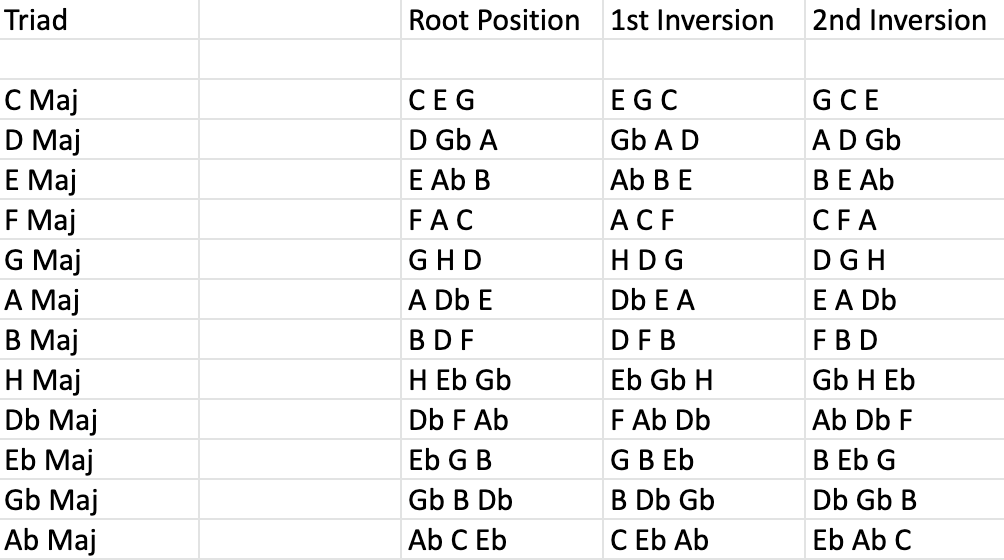I always read sheets with my students. This means that each of my students should be able to look at a sheet of music and start playing after a short look.
Most of the time, however, students are confused because the same chord diagrams are not always displayed above the chords and then try to play the new pattern.
Why can you play a G chord with so many different fingerings, but it’s always a G?
To get to the bottom of this question, we first need to understand how chords are actually structured:

Here we have four different ways to play a G chord. And ultimately everyone sounds like G. The only thing that changes is the chord color.
Let’s take a closer look at the G chord:
In the first diagram, we press 3 notes and 3 empty strings (the strings that are played but not pressed.)
The notes we play in total are:
- G, B (in Europe we call this note H), D, G, B, G
example 1

As you can see, we play the toneG -> 3x . The toneB -> 2x and the sound D. just once .
On the guitar, chord tones are doubled and tripled. It would sound too clumsy to just play each note once. That’s why we octave every note to get a ‚fatter‘ sound.
Example 2

On this chord, we play the note G again 3x , the B. but only once , but for that D 2x.
The Chord tones are still the same, but a different one is doubled. It doesn’t matter what exactly you do with the notes. So long in one G major the G, B and D. appear in it, it is a G major .
Example 3 (barre)

Here we come to a barre chord. From the point of view of the grades, we use the doubling etc. in exactly the same way as in the 2nd example. But why does the barre chord in example 3 sound different than the open strings chord in example 2?
The reason is very simple, we use a ‚ inversion ‚, so one reversal of the chord.
Sure, the reverse is not perfect. We’re actually just doing a different voicing, but we’ll get to the correct reversals in a moment.
Instead of us playing the notes in sequence, e.g. G -> B. -> D. , let’s play the barre chord G -> D. -> (G octaved) -> B. . So we use (almost) a reversal.
initial position : G, B, D
First reversal : B, D, G
Second reversal : D, G, B
The chord is always G, you don’t even have to write something down that you don’t play the chord in the basic position.
Inversions triad

These 3 chords are all normal G major chords. But with their inversions. The chord may sound totally different at first and sounds like it has nothing in common with the G major. However, the tones are exactly the same, starting with the 1st tone, the 2. Sound and that 3rd tone.
If there is a G major in a song, you can use one of the above examples or an inverse and it will always sound right.
Chords with inversions
Here is a list of all chords (triads) and their inversions.
| Triad | Root position | 1st inversion | 2nd inversion | |
| C Maj | CEG | EGC | GCE | |
| D Maj | D Gb A | Gb AD | AD Gb | |
| E Maj | E From B | From BE | BE Ab | |
| F Maj | FAC | ACF | CFA | |
| G Maj | GHD | HDG | DGH | |
| A Maj | A Db E | Db EA | EA Db | |
| B Maj | BDF | DFB | FBD | |
| H Maj | H Eb Gb | Eb Gb H | Gb H Eb | |
| Db Maj | Db F Ab | F from db | From Db F | |
| Eb Maj | Eb GB | GB Eb | B Eb G | |
| Gb Maj | Gb B Db | B Db Gb | Db Gb B | |
| From Maj | From C Eb | C Eb Ab | Eb Ab C |
An Excel file with the inversions can be downloaded on my Patreon page.

Keine Kommentare